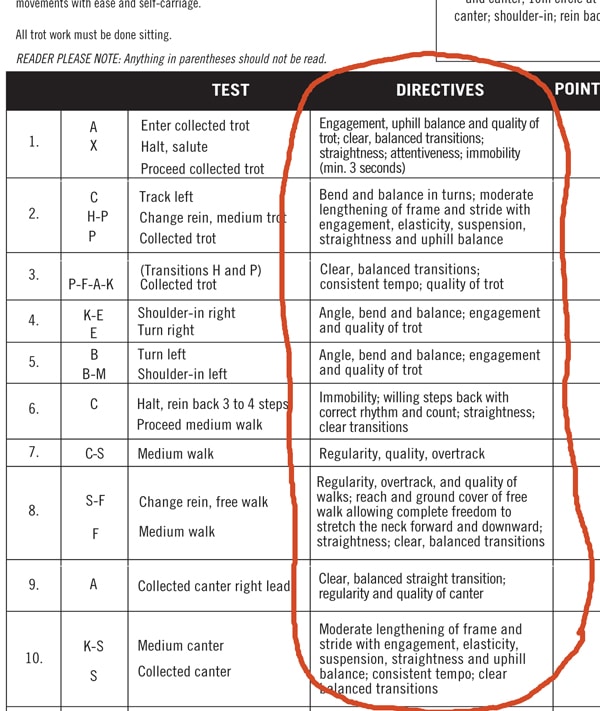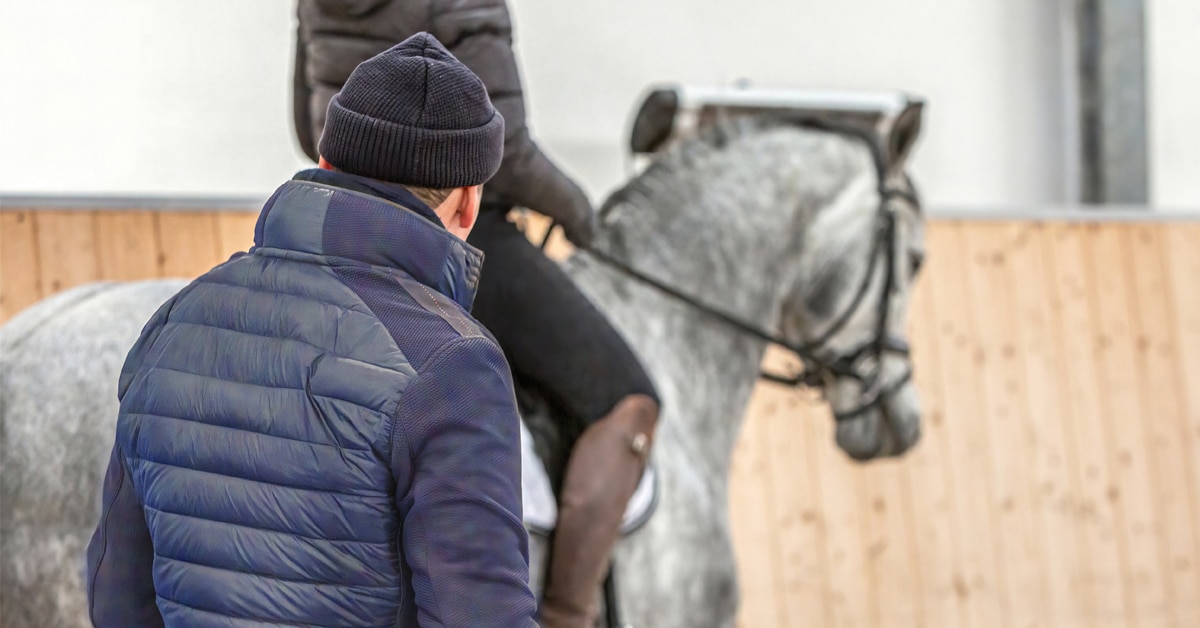“Practice does not make perfect. Only perfect practice makes perfect.”
~ Vince Lombardi, American football coach.
Canadian dressage icon Christilot Boylen is also known to impart this phrase! In other words, if your practice is messy, then you are practicing your performance to be messy. You can only perform what you have practiced and very rarely will your performance be better than your best practice.
This doesn’t mean that sometimes training doesn’t get messy, but if you are planning on competing, then you need to be proficient and secure in the work required for the particular level to make ‘perfect practice’ possible.
If you are not on your way to the southern States to start your 2023 show season, what are you doing now to plan for your Canadian show season? There is a lot to be done in the next few months to be ready for the first show north of the border.
New tests for 2023
Learn the tests you are planning to ride this year, which means memorizing them – all three tests of the level. For extra preparation, read the tests of the level above so that you have an idea of where you are going.

Assess where you and your horse are right now in your preparation for the level. After reading the tests, you should be able to predict what will be easy combinations of movements for you and your horse, and which will be challenging. If you feel ready to try the level, then your next step is to do a practice run through each test to figure out what was easy and what was challenging.
After you have run through all of the tests of the level once, make a list of which combinations of movements are good and which combinations need work. Over the next few weeks, make a plan with your coach to focus on the combinations that need the most work, but don’t ignore the combinations which seem easier. Finally, string together the combinations and ride the test again to see how it compares to the first attempt. Reassess the list of good combinations and weaker combinations and tweak the training plan.
Winning warmups
In the weeks leading up to your first show, time your warmup. How long does it take to tack up, warm up and be ready to ride the test? What is your priority in your warmup? Relaxation? Suppleness? Transitions? Responsiveness? Know the answers to as many questions beforehand that may pop up on show day as you can.
If possible, figure out what kind of show person you are: do you need lots of quiet time, do you need to be busy, do you need to be at the barn hours in advance or prefer to prepare quickly on the day? How long does it take to braid? Have you worn your show clothes before, or are they brand new?
Practice Show
Time to show off all your hard work! If you are able to ride through your test at a practice show, percent day or schooling show, take the opportunity every chance you get, even if you ride at the same level as last year, or a level lower than you are working towards, to de-stress things a bit.
While riding the test at home is one set of skills, riding at a show is another important skillset to master. Riding while nervous, in a new environment, and performing on demand can really only be experienced in a show situation. Again, to increase your comfort level, ride a level or two below what you are practicing at home.
Other Tips
- Have a friend video your test, or ride in front of friends at an exact scheduled time, such as you would experience at a show.
- Practice show prep such as grooming, braiding, clipping or anything else you may need to do.
- Ride in your new show clothes so there are no ‘surprises’ on show day.
- Practice how to do your hair – either contained in a hairnet, tucked under your hat or in a tidy bun – and make sure it fits safely and comfortably with your helmet.
- Make sure new boots and any tack or other equipment are nicely broken in.
Good luck, and good showing!

